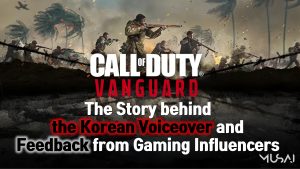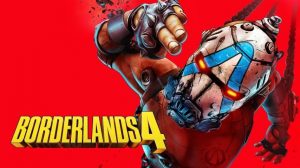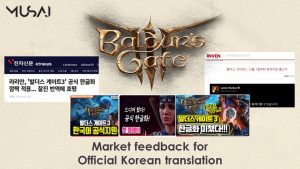[MUSAI] The Key to Successful Localization Users Support for Japanese Games
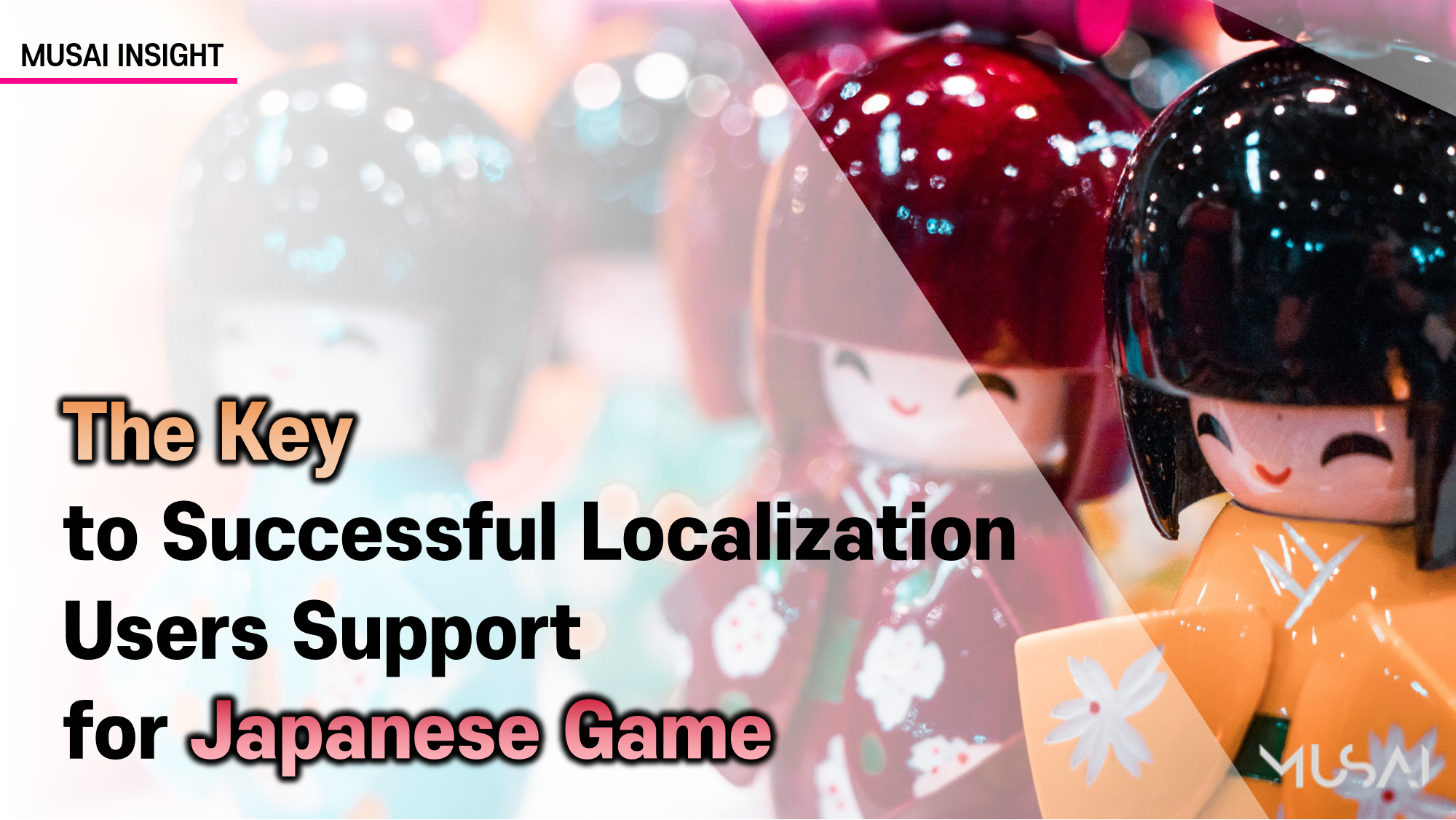
2021-03-26
The geographically close yet culturally far-parted country, Japan. Their games with unique style and expression depicting its culture have accumulated a huge fan base all over the world over a long time. Since the games are in Japanese, of course, it is one of the languages with high importance when it comes to game localization.
In today’s article, we will discover the tips for translating Japanese games. Based on the Japanese-Korean projects we handled in Musai Sudio, we will look at the important points in Japanese game translation.
Translating Chinese Characters(Kanji), show wits within the word-limit
In Japanese writing system, Chinese characters, Kanji, are used, and as many people know, Kanji is an example of ideogram, each character representing specific meaning. Therefore, single-charactered words sometimes may be equivalent to 2-3 words when translated in Korean. This is the reason translating Japanese games become trickier, compared to other entertainment genres or languages; In game translation, the number of characters that can be shown in on the screen is limited depending on its platform, so it is important to translate to convey the meaning within the allowed word-limit.
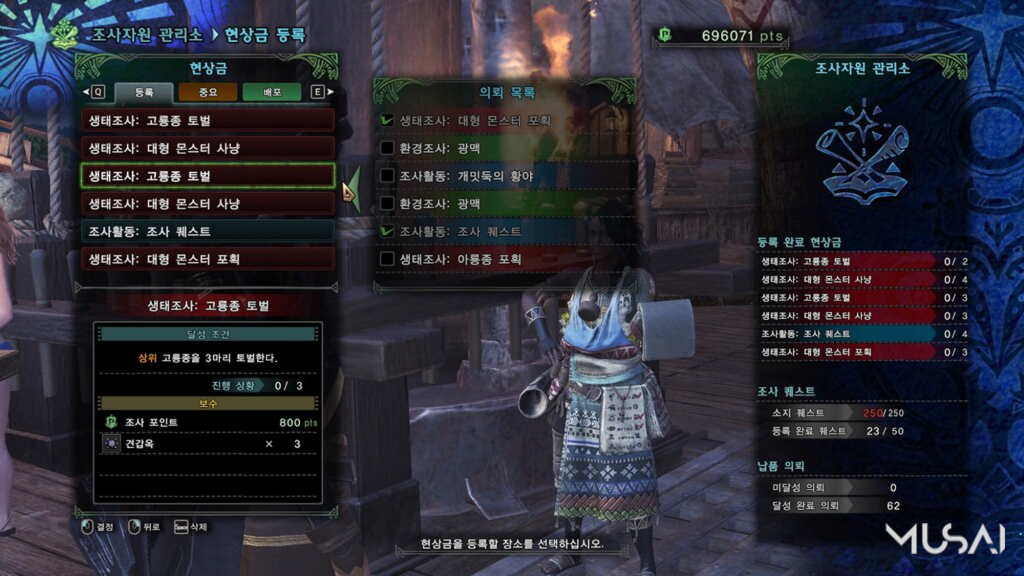
Transliteration by sound, creating new words may be better
When Kanji is transliterated by sound, it is often translated into words that do not exist in Korean or are easily confused with other words. In such cases, the meaning must be checked, and even create new terms if necessary. In Japanese games, many terms are often created by synthesizing each Kanji with plausible meanings.
Let’s take examples. ‘導蟲(도충, しるべむし, Shirubemushi)’ and ‘転福珠(전복주)’ in Monster Hunter World. ‘導蟲‘ is created by attaching 導 and 蟲, each means ‘to lead(導)’ and ‘insect(蟲)’ respectively. These insects guide the hunters to the monsters; instead of ‘도충 do-chung,’ as reading the Chinese characters in Korean, it is translated into a newly created word, ‘안내벌레(guide bug)’ to represent its role in the game. Also, if ‘転福珠’ was transliterated such way, it would have become ‘전복주(jeonbokju).’ The problem was the word does not exist and ‘Jeonbok’ means ‘abalone’ in Korean (and ‘Ju’ meaning ‘liquor’). To spare users from such confusion, it is translated as ‘전화위복주(misfortune turning into a blessing+liquor)’ after checking its effects.
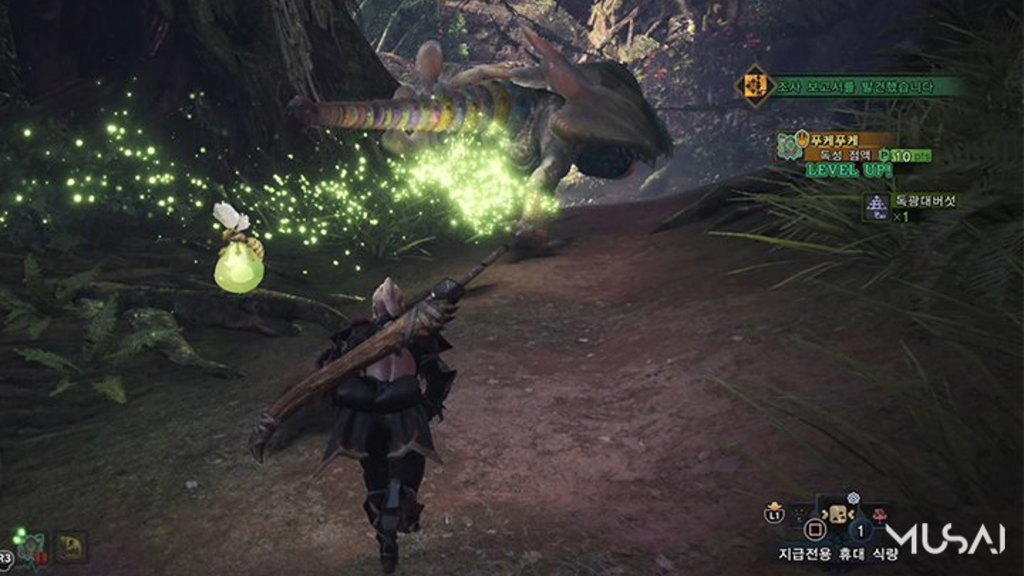
Coming up with plausible terms according to its category
As for other languages, there are many things to be considered while translating Japanese texts in games due to the nature of the genre. In games, same characters may be translated according to its meaning or transliterated by its sound depending on the terms’ characteristics or category (ex. items, skill names, etc..) to make it easier to understand.
Let’s continue with examples from Monster Hunter World. ‘鱗’ is a Kanji character with a meaning of ‘scales.’ Depending on its category, sometimes it was translated by its meaning (鱗 to scale, 비늘); other times, it was transliterated by its sound(鱗 to 린).
| Japanese | Korean(En) | Category |
| 鱗片 |
비늘 조각 (scale) *translated by its meaning* |
Monster trace |
| 賊竜の鱗 |
적룡의 비늘 (Great Jagras Scale) *translated by its meaning* |
Monster material |
| 爆鱗竜 |
폭린룡 (Bazelgeuse) *transliterated* |
Monster title |
‘Beginner’ may be translated into ‘Super Sayian’!
On the other hand, characters with same sound may have different meanings. In these cases, it may cause some confusion when written sorely by its sound and therefore should be translated according to its meaning.
Let’s explain with the words ‘初級(초급, beginner)’ and ‘超級(초급, nightmare)’ as an example. Both words are used very commonly to describe the level of difficulty or character grades, yet the characters ‘初’ and ‘超’ are both read as ‘초, cho’ in Korean. ‘超,’ the latter, having the meaning of ‘super’ and 超級 basically meaning the highest level beyond the advanced level, should be translated into terms such as “transcendence level” or “ultra hard level,” etc. so that it does not have the same translation with ‘初級(초급),’ the beginner level. Likewise, in Monster Hunter World, the skill name ‘超会心スキル, (cho-hoeshim skill, 초회심 스킬’ was translated to ‘슈퍼회심 스킬, super-hoeshim skill, or critical boost in En).
Good paraphrase attracts attention
Starving Deviljho in Monster Hunter World Iceborn is an exemplary case of liberal translation drawing attention. ‘Eviljho’ is a monster in the game and its original Japanese name is ‘極み喰らうイビルジョー.’ If translated literally, it would have been ‘eviljho that devours’. Considering that this monster has a ruthless attack-style and would attack whatever it happens to come across, it was translated as ‘crazy eviljho.’ Such straight-forward translation unlike complex and excessively rhetorical names of other monsters received positive responses form users, and the name was used in the Iceborn series.
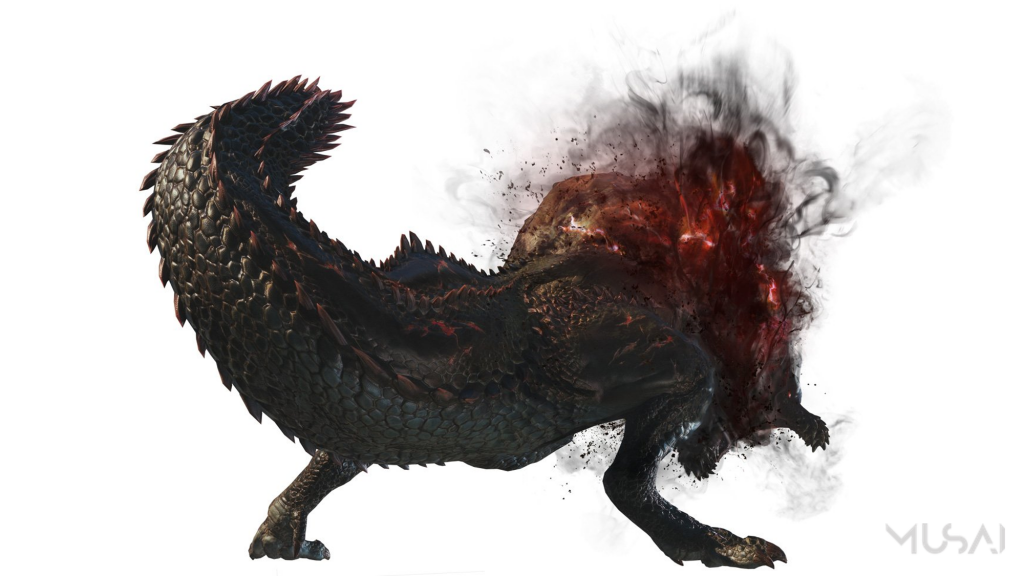
We have shared some tips on Japanese translation by looking into some projects we Musai has worked on as examples. Details about translation would be not of importance unless you are a translator. However, if you can tell which is a good translation, it would be possible to understand the language difference and overcome its barrier, whether you are operating a localization team or using a localization agency, and these articles are to help you with in such ways.
Good localization is the bridge between good games and users. We, Musai hope more and more global game contents would reach to the users in Korea via the sturdy bridge, and domestic games to reach the global market and bloom.
** Did you enjoy the news of Musai? Please click subscribe and share the story.
BOOST YOUR PLAY! Musai Studio


